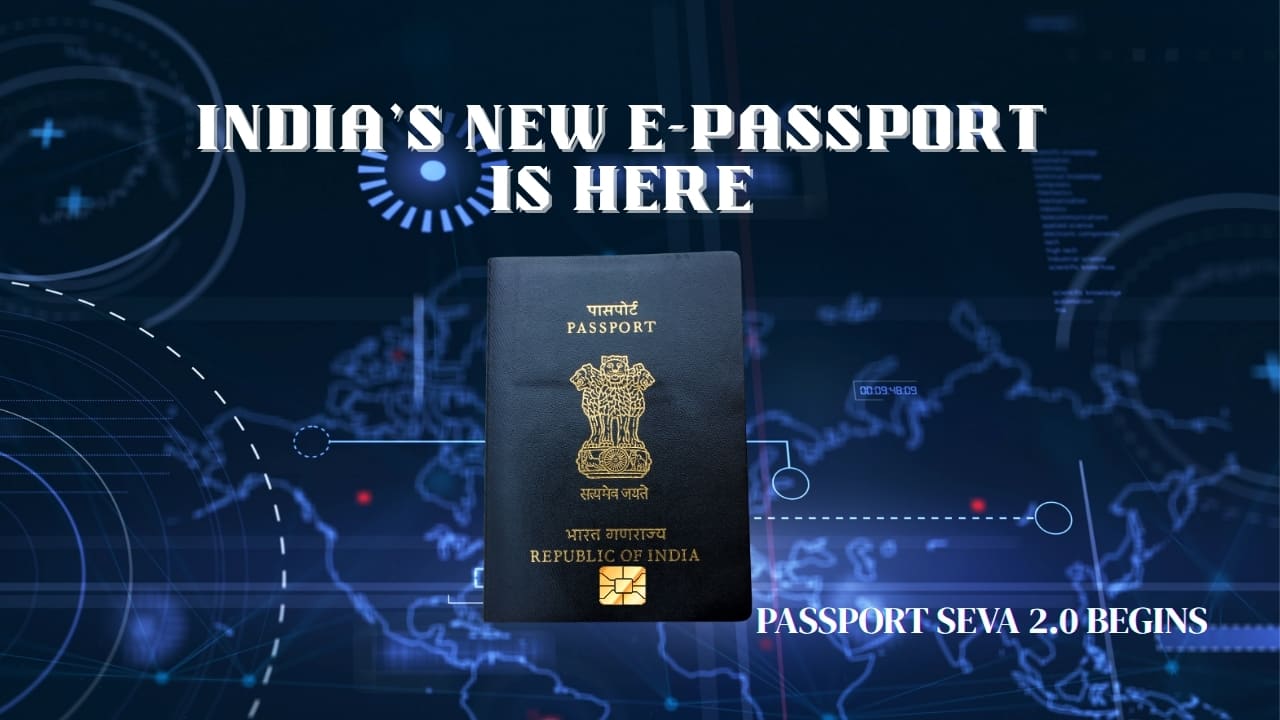Politics
India Launches e-Passports: A New Era in Travel Security

India has officially introduced biometric e-passports, marking a significant advancement in digital travel identity. The rollout, managed by the Ministry of External Affairs, follows months of trials and is currently active in several cities, with plans for a nationwide expansion. This initiative is part of the broader Passport Seva Programme (PSP) 2.0, which aims to modernize how Indians travel abroad through enhanced security and efficiency.
Understanding the e-Passport
At first glance, the e-passport resembles the traditional dark blue passport many are familiar with. However, embedded within its pages is a secure electronic chip that holds biometric data, including a facial photograph, fingerprints, and other personal information. These e-passports comply with standards set by the International Civil Aviation Organisation (ICAO), enabling their use at e-gates and smart immigration counters in over 120 countries. The chip employs Public Key Infrastructure (PKI) encryption, a feature that significantly enhances security by preventing data theft and tampering—a notable improvement over conventional passports.
Reasons for the Transition
The primary motivation behind the introduction of e-passports is security. With a rise in identity theft and document forgery globally, the biometric features make it increasingly difficult to clone or misuse an individual’s identity. Additionally, the implementation of e-passports is set to improve efficiency at airports. These passports can be scanned using contactless readers, substantially reducing wait times at immigration counters, particularly in busy international hubs.
By adopting this technology, India aligns itself with countries such as the United States, United Kingdom, Germany, and Singapore, which have already integrated biometric passport technology into their systems.
Applying for an e-Passport
The application process for an e-passport is largely similar to that of a traditional passport:
1. Visit the official Passport Seva portal.
2. Create an account or log in.
3. Complete the application form for either a new passport or renewal.
4. Schedule an appointment at the nearest Passport Seva Kendra.
5. Submit biometric data, including a photograph and fingerprints, during your visit.
6. The e-passport, featuring the embedded chip, will be printed and sent to your registered address.
Additionally, applicants can utilize Post Office PSKs or mobile passport vans in select areas to apply for their e-passports.
Current Passport Validity
Existing passport holders need not rush to acquire an e-passport immediately. The government has confirmed that traditional passports will remain valid until their expiry date. The introduction of e-passports promises to offer a smoother and safer travel experience. With contactless scanning capabilities, immigration checks will be expedited. Furthermore, the embedded biometric data adds a layer of security, making it difficult to forge or alter the document.
Visually, e-passports will be distinguishable by a golden chip symbol on the cover, indicating a significant shift towards a more secure and digital travel document.
India’s launch of e-passports represents a major step forward in enhancing travel security and efficiency, meeting international standards and expectations. As the rollout progresses, travelers can look forward to a more streamlined experience when crossing borders.
-

 World5 months ago
World5 months agoSBI Announces QIP Floor Price at ₹811.05 Per Share
-

 Lifestyle5 months ago
Lifestyle5 months agoCept Unveils ₹3.1 Crore Urban Mobility Plan for Sustainable Growth
-

 Science4 months ago
Science4 months agoNew Blood Group Discovered in South Indian Woman at Rotary Centre
-

 World5 months ago
World5 months agoTorrential Rains Cause Flash Flooding in New York and New Jersey
-

 Top Stories5 months ago
Top Stories5 months agoKonkani Cultural Organisation to Host Pearl Jubilee in Abu Dhabi
-

 Sports4 months ago
Sports4 months agoBroad Advocates for Bowling Change Ahead of Final Test Against India
-

 Science5 months ago
Science5 months agoNothing Headphone 1 Review: A Bold Contender in Audio Design
-

 Top Stories5 months ago
Top Stories5 months agoAir India Crash Investigation Highlights Boeing Fuel Switch Concerns
-

 Business5 months ago
Business5 months agoIndian Stock Market Rebounds: Sensex and Nifty Rise After Four-Day Decline
-

 Sports4 months ago
Sports4 months agoCristian Totti Retires at 19: Pressure of Fame Takes Toll
-

 Politics5 months ago
Politics5 months agoAbandoned Doberman Finds New Home After Journey to Prague
-

 Top Stories5 months ago
Top Stories5 months agoPatna Bank Manager Abhishek Varun Found Dead in Well









